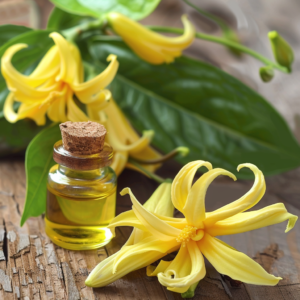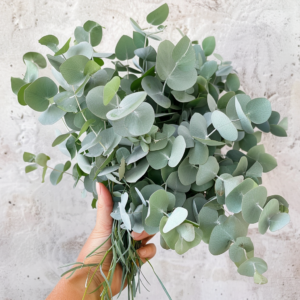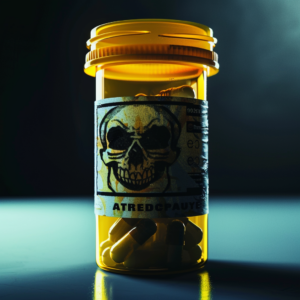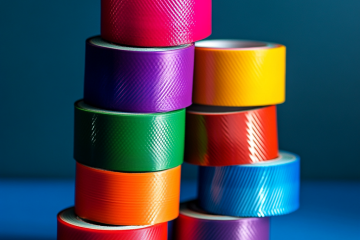
Ylang Ylang should be avoided by pregnant women
While I usually love talking about the merits of these invaluable additions to my medical preparedness, I feel that it’s also important to point out some dangers and cautions as well.
For starters, let’s be clear that you really need to listen to your body when it comes to using an essential oil. Some essential oils act completely different on a person who is pregnant or who struggles with epilepsy than they do on others who aren’t in the same position. For example, in pregnant women, ylang ylang could cause blood pressure to drop. It’s not one that I would put on my “no no when pregnant list” but it should definitely be viewed with caution.
There are a few essential oils that I don’t believe anyone should use singularly, regardless of their state of health. Those oils are bitter almond, boldo leaf, yellow campho, horseradish, jaborandi leaf, mugwort, mustard, pennyroyal, thuja, tansy, rue, sassafras, savin, southernwood, wormseed and wormwood. Finding these in an essential oil blend may make them less harmful, but for the most part, these botanicals are better if used in their herbal form, not in a concentrated one.
When you use an essential oil, understand that each drop you use is usually the equivalent of an entire pound of botanicals, if they are pure and unadulterated. Some quality of oils are more like and ounce of botanicals, but regardless, they shouldn’t be taken lightly. Sure there are some essential oils that seem to do no wrong such as lavender, eucalyptus, lemon, and grapefruit, but all essential oils have a cleansing effect on the body. Drastic cleansing in an epileptic patient can bring on a seizure, so the essential oils must be used with care and caution.
How Much Essential Oil Should I Use?

Fresh Eucalyptus
When it comes to knowing how much oil to use, understand that for the most part, if you’re using pure therapeutic grade oils, one drop is all you need. In fact, in most cases the essential oils wont’ increase the effectiveness if you only use one drop vs. 5. If you must use more oil in order to have any noticeable impact, then chances are you’re using a weaker concentration of oil. While that’s not necessarily a bad thing, so long as other lesser oils aren’t cut into the essential oil you’re relying on for aid. However, obviously if more than one drop of oil is necessary, then it certainly should be taken into consideration when you purchase your oils. The price may be less, but if the effectiveness is watered down at all, then your money may be better spent on a more pure oil.
Many essential oils are a bit “spicy” meaning that they will actually burn if they are applied directly on the skin. Such oils should be combined with a mild, pure carrier oil such as coconut oil, grapeseed oil, or almond oil. You can also get the same result if you use a bit of KY Jelly to apply the oil. Appropriate cautions should be noted on the containers of oil you purchase, or at least with accompanying marketing information. Since the molecules of essential oils are extremely small, it poses a challenge to get them to spread evenly over an area of the body before they absorb all at once in one small drop of an area. A carrier oil is ideal to help you get the most surface benefit of an essential oil. If you don’t have a carrier oil, you can also use water (preferably distilled) to help cover a larger area with just one drop of essential oil. Understand, though; that water actually amplifies the effects of the oils and carries it more quickly into the body.
Bottom line, begin with a small amount of oil and increase as your body sees fit.
Essential Oil Use on Children
When it comes to using essential oils on children and infants, they always should be diluted with a carrier oil. Remember that some of the essential oils smell really yummy to a child. So be sure that you keep them out of reach of children so that they don’t decide to take a chug. (Remember doing that with Vanilla Extract when you were a kid?) If you ever find that a child has dumped a bunch of essential oil on themselves, quickly apply a vegetable protein oil to the spilled areas such as olive, almond, grapeseed, or safflower. This will slow down the absorption rate of the oil. Remember, do not use water—even if the oil gets into the eyes. Water will only intensify the effect. Use a petroleum jelly or something similar that is safe to be around the eyes. Once you have applied the carrier oil, then you can begin wiping away as much of the excess with a soft, dry cloth.
Lastly, there are some essential oils which are considered phototoxic, which means that if they are on your skin and then exposed directly to the sun, it will actually absorb more of the UV radiation faster. So, pay attention to where you are applying your oils so that they aren’t in the direct sunlight on your person or at least make sure that you’re mindful of the oils which are inherently phototoxic. These oils are angelica, bergamot, orange bitter, grapefruit, lemon, lime, petitgrain, and rue. Some caution should be used when applying fennel, anise seed, and cumin if they will be exposed to direct sunlight. Again, remember that direct sunlight is key to the unpleasant effect. If you apply the oil where the sun doesn’t shine *grin* then you’ll be fine.

Prescription medicines are the #3 killer in America, used as directed!
Also, I want to reiterate that I have found NO cases in which the use of essential oils has caused serious injuries or death. On the other hand the American Medical Association has reported the hundreds of thousands of persons who die every year while correctly using prescribed pharmaceuticals. (it’s the third largest killer in our nation) Again, this is where the spiritual preparedness comes in. Listen to your gut and act accordingly. Essential oils are generally safe even in the hands of amateurs, but too much of any good thing could still be harmful. It is for this purpose that I share this information with you today, that you may all be appropriately cautious as well as anxious to jump in to this world of independent medicine.



5 Comments
Anna · August 26, 2010 at 1:00 am
Kellene
Well put together article. You may also use vinegar (white) to get eo’s off the skin quickly. I work with both fragrance and eo’s and inevitably I’ll get some on my finger tips and touch my lips or nose at some point… I grab that handy bottle of vinegar and splash it on, it dilutes it immediately. Then I rinse with cool water. Ick on the vinegar smell and taste but it does work well.
Thanks.
Anna
terilyn · August 26, 2010 at 8:37 pm
Peppermint, Rosemary, and thyme oils can raise bp, so hypertensive patients should avoid them. Choose other oils in that situation.
Kellene · August 26, 2010 at 8:44 pm
Actually, when used in a blend, those oils actually have the opposite effect. Isn’t synergy wonderful??
Kat · August 31, 2012 at 5:27 am
Note: From Preparedness Pro–the majority of the statements made in the following comment are incorrect, however, in hopes that this might be a learning experience for our other readers, I’ve allowed it to be published in its entirety–Kellene Bishop:
Actually, terilyn is correct: a blend isn’t going to remove the dangerous properties that cause blood pressure to rise. Just by mixing oils, you don’t magically transform the chemical makeup of the molecules that are the active components of the oil — those molecules with those same properties will still exist whether you blend or not. Blending would only dilute the dangerous effect (for that certain subset of people, such as the hypertensive) since those “problem” oils would simply make up less of the whole blend. In order words the person gets less volume of that particular oil in the blend – they don’t avoid those properties, they are just blunted because the molecules will still exist just as they would if they were not blended.
In order for a blend to effectively counter the non-desirable effects of an oil (like the property that causes a rise of blood pressure), you would have to have the specialized knowledge of which other oils have the opposite properties (that lower blood pressure). And then you would also have to be sure you could quantify the strength of all the oils in the blend in order to be certain you used enough of the counterbalancing oils to effectively remove all undesirable effects (the properties that raise the blood pressure). You’d need a lab to test the oils to see how strong they were and then would need to do specialized blending to be sure your result actually did counterbalance the dangerous properties in the blend so it neither raised or lowered blood pressure. In effect, blending to counterbalance would be sort of like drinking caffeinated coffee laced with lots of chamomile or alcohol: one to boost you up and the other to chill you out. The body will still do both if given both even if the end result is moderated.
Honestly, the average person should not be “playing” with pure essential oils and anyone using them in any form, pure, diluted, as part of various products, should fully understand the oils that are contraindicated for their personal health issues and of those people all around them. Those oils should be completely avoided, so the previous commenter is correct: those oils should not be used by people with high blood pressure. For a very complete list of contraindications, I highly recommend the book “Aromatherapy: An A to Z” by Patricia Davis. These warnings should not be taking lightly and it’s just about impossible to “blend” away the risk for using something you shouldn’t be using.
Why? Oils are chemicals, although they are simply “pure unprocessed” chemicals in that they have not been adulterated during extraction (assuming you have obtained a clean product from a reputable source). Nearly all the oils are steam extracted so there is little about that process that would contaminate pure fresh clean plant parts that are the source from which to extract the oils. However, oils will vary in their strength due to variances of nature (bigger plants, soil, stronger sun, larger leaves, older roots, etc.) On the other hand, nearly all the chemicals used in western medicine are chemically adulterated during manufacturing because the drug companies cannot patent (i.e. make money off of) a natural product that is unprocessed such as a simple essential oil. So they extract this active component and that one, concoct a remedy of these lab created chemicals and then charge us out the wazoo for them. Oils are great, they are “natural” but you have to know what you are doing with them or you can be putting yourself at great risk.
Also, lavender is TOXIC for cats. They cannot process it out the liver and there have been many anecdotal instances of cats dying of liver failure after they were treated with lavender oil products.
Kellene Bishop · August 31, 2012 at 8:09 pm
Your lengthy post contains a lot of incorrect information as well as some psuedo truths in it, as such, I simply cannot permit it to be posted as is, without the disclaimer. But, I believe you makes some excellent points that even though they might be intended to be argumentative, they still might assist our readers.
I believe you’re getting a bit mixed up in some areas. To say that blending of properties does not make any difference to the structure of an essential oil is to deny all of the fundamentals of science. I believe you are sharing some of your understanding based on a longtime experience with inadequate properties such as essential oils. For example, over the last 10 years our nation has surged with gluten allergies and dairy allergies. I’m certain, based on some fabulous research studies that have been done in Europe, that the majority of such allergies aren’t to dairy or gluten, rather to all of the other JUNK that is now a part of our gluten and dairy world. The same holds true with the assumption that ANY peppermint will compromise high blood pressure and that NO molecular changes of the environment of the peppermint will mitigate that issue.Just the process of baking bread shows that your position is erroneous. Any good baker knows NOT to allow the yeast to touch the salt as they simply don’t get along–UNLESS and until the flour is introduced into the mix and acts as a buffer. Gasoline, on its own doesn’t burst into flame, but when one additional component is added–a flame, it explodes. Even more specific to clarifying your misunderstanding is H2O. We all know that that is the scientific formula for water. However, when you add just one more molecule of oxygen you have, not healthy water, but a completely different component–hydrogen peroxide. I think that any of us would agree that drinking 2 liters of hydrogen peroxide per day would result in certain illness and even death. So regardless of what the constituents are when they are first introduced, they CHANGE with other influences. That’s why a plant can be nutrition in one circumstance but poisonous when growing in conditions of drought. That’s how nature works, it’s how science works. And in fact, as stated in the article, it’s not even just the adding of the components, it’s WHEN they are added.
As to your repulsion of someone using pure essential oils…sorry, you’re just plain wrong on that one as indicated by the litany of reference books that are used in the medical industry of over 80% of the rest of the world.
I think if you were to read “What you NEED to Know About Essential Oils–Part 1 and Part 2 then you would get some clarification on your understanding of “pure” essential oils. I don’t think we’re as far apart on understanding based on factual information as you might think and I suspect that you’ll receive some clarification that would be beneficial. (see http://preparednesspro.com/what-you-need-to-know-about-essential-oils-part-1/ and http://preparednesspro.com/what-you-need-to-know-about-essential-oils-part-2/ )
Lavender essential oil IS toxic for cats if the oil itself is introduced into the cat’s system. You’re correct, their liver can’t process it.
Comments are closed.